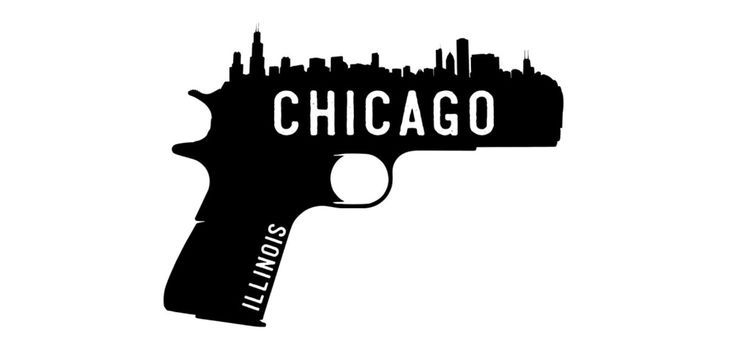
A Stat For The Gun Control Debate: In 2014 Chicago (A 32% White City), 99% Of Nonfatal Shooting Suspects Were Non-White
By Paul Kersey
08/22/2019
Shot.
95 Percent Of Chicagoans Listed As Gang Members By Chicago Police Are Black, Latino, Watchdog Audit Finds, BlockClubChicago.org, April 11, 2019
Approximately 95 percent of the at least 134,242 Chicagoans listed as gang members by the Chicago Police Department are Black or Latino, an audit released Thursday by the city’s watchdog found.
Chaser.
Chicago on the Brink: A retreat from proactive policing has unleashed mayhem in the city, by Heather Mac Donald, City Journal, Summer 2016

In March 2015, the ACLU of Illinois accused the Chicago Police Department of engaging in racially biased stops, locally called “investigatory stops,” because its stop rate did not match population ratios. Blacks were 72 percent of all stop subjects during a four-month period in 2014, reported the ACLU, whereas whites were 9 percent of all stop subjects. But blacks and whites each make up roughly 32 percent of the city’s populace. Ergo, the police are racially profiling. This by now drearily familiar and ludicrously inadequate benchmarking methodology ignores the incidence of crime. In 2014, blacks in Chicago made up 79 percent of all known nonfatal shooting suspects, 85 percent of all known robbery suspects, and 77 percent of all known murder suspects, according to police department data. Whites were 1 percent of known nonfatal shootings suspects in 2014, 2.5 percent of known robbery suspects, and 5 percent of known murder suspects, the latter number composed disproportionately of domestic homicides. Whites are nearly absent, in other words, among violent street criminals — precisely whom proactive policing aims to deter. Whites are actually over-stopped compared with their involvement in street crime. Nearly 40 percent of young white males surveyed by Northwestern University criminologist Wes Skogan in 2015 reported getting stopped in the previous year, compared with nearly 70 percent of young black males. “Statistically, age is the strongest correlate of being stopped,” says Skogan — not race.
Unfortunately, the Chicago Police Department doesn’t make public the data Heather Mac Donald cited in this piece quoted above, but let’s repeat the key datapoint from her article: 99 percent of known nonfatal shooting suspects in 2014 Chicago were nonwhite.
Ninety-nine percent.
Chicago, mind you, is 32 percent white.
Chicago’s new demographics: ‘A third San Francisco, two-thirds Detroit’: An interview with urbanist Pete Saunders on Chicago’s tale of two cities, Chicago Curbed, June 24, 2019
Chicago’s legacy of segregation — freezing people of color from the physical and economic networks that would have helped spread more growth across the city — has created patterns that will need a social solution. Saunders sees the issue as more of a social than economic problem, despite the large economic toll. The city needs to invest in workforce development and education, and helping employers and employees connect in different ways.
A 2017 report by the Metropolitan Planning Council and Urban Institute, “The Cost of Segregation,” found that if the city’s above-average black-white segregation levels were simply reduced to meet the national level, the city’s economy would generate $8 billion more annually. In addition, an average black household in Chicago earns 47.3 percent of what an average white household makes, less than the nationwide rate of 60.1 percent. Chicago is so much larger, area-wise, than many other metros, Saunders says, which prevents some of the dynamic downtown growth from impacting neighborhoods historically excluded from opportunity.
Again, in 2014 Chicago, 99 percent of nonfatal shooting suspects in the 32 percent white city were black.
A pertinent fact for the gun control debate…
